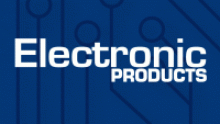
When you connect Ethernet, Wi-Fi, data storage, broadband, or many other devices to each other, there’s a good chance that it works because of the University of New Hampshire Interoperability Lab (UNH-IOL). Located in Durham, the UNH-IOL’s engineering staff and students develop test plans, design hardware, and write embedded code and applications for testing many communications links. Often, the lab is the first to develop test tools, which then become adopted as the standard for interoperability and compliance testing.
To learn how UNH-IOL works with silicon and test manufacturers, Electronic Products visited the lab on Dec. 18, 2017. Chief Engineer Bob Noseworthy and Ethernet Technologies Senior Manager Curtis Donohue explained how the lab works, with a focus on automotive Ethernet.
The UNH-IOL is a self-funded, independent testing lab affiliated with the university. Member companies who use the lab’s equipment and testing services and attend plugfests pay an annual fee. The lab also produces test reports for member companies to show standards compliance to their customers.
While many of the lab’s clients are semiconductor companies looking to test their latest silicon, other companies such as cable manufacturers also join. Test-equipment and networking-equipment companies also play a role, often donating their products to the lab. The lab’s large array of networking equipment lets member companies test for backward-compatibility.
Before there is test equipment
Because many of the lab’s clients design ICs for emerging technologies, there’s often no test equipment commercially available. Thus, the UNH-IOL often develops its own test hardware and software. Under staff supervision, students often develop the software based on test plans. Once tools are in operation, the students use them to test customer products.
“The test plan shapes how we develop a test tool and what it needs to do,” said Noseworthy. “Member companies come to plugfests or work with us to validate the test plan, interoperability tests, and conformance test tools. Members often duplicate our hardware and use our software in their labs.”
Automotive Ethernet
Because automakers are incorporating Ethernet into vehicles, the UNH-IOL is involved in developing new standards, test tools, and test plans. Automotive Ethernet running at 100 Mbps soon won’t be fast enough to move data from the ever-increasing number of sensors and cameras in vehicles. Autonomous and driver-assisted vehicles rely on these devices. Connecting each with its own pair of wires isn’t feasible because of cost and weight constraints. That’s why 1000BASE-T1 (IEEE 802.3 bp) products are beginning to appear. UNH-IOL announced its 1000BASE-T1 testing services on Jan. 17, 2018. (T1 refers to a two-wire link, as opposed to the traditional eight-wire cable.) The lab’s staff and students work closely with the One Pair Ethernet (OPEN) Alliance, an organization encouraging the use of a single pair of wires in vehicles and the development of physical-layer (PHY) ICs. Fig. 1 shows one of the lab’s benches used for testing automotive Ethernet products.
